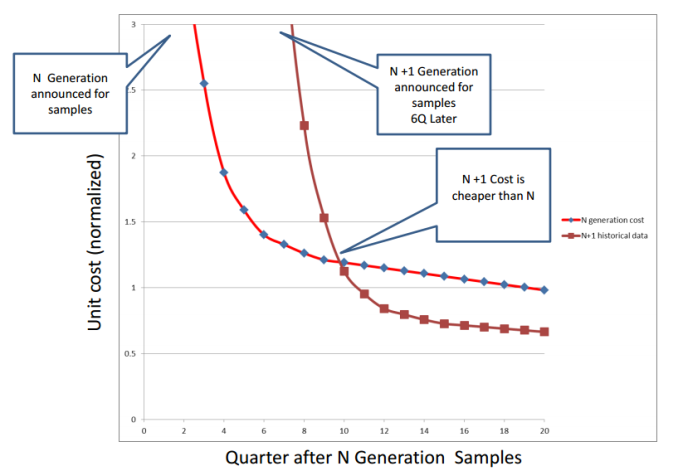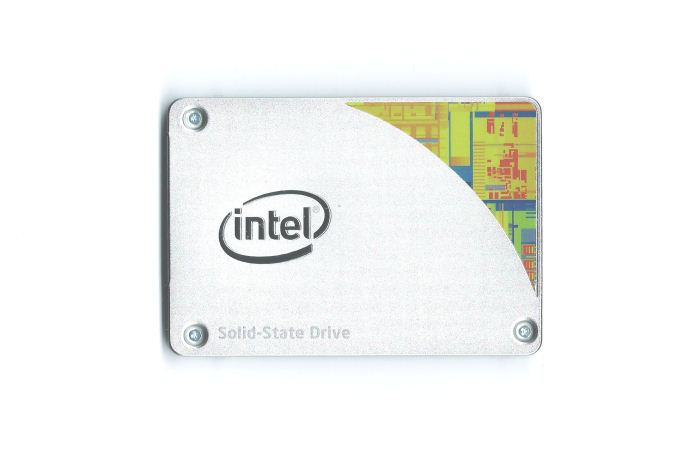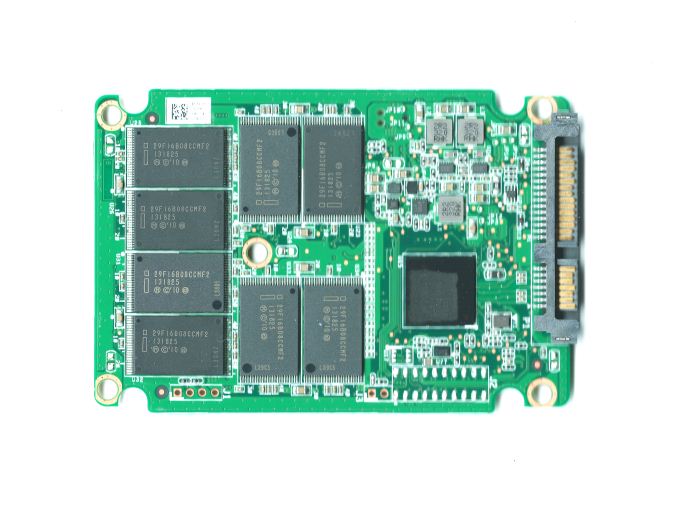Intel SSD 530 (240GB) Review
by Kristian Vättö on November 15, 2013 1:45 PM EST- Posted in
- Storage
- SSDs
- Intel
- Intel SSD 530

The consumer SSD market is currently at a turning point. SATA 6Gbps is starting to be a bit long in the tooth but SATA Express support is still very limited. There is currently only one motherboard (ASUS Maximus VI Extreme) that has an M.2 slot and even that is limited to PCIe x1, making M.2 quite redundant at this point. On top of the lack of motherboard support, all M.2 SSDs are OEM only at the moment, which makes sense because it's pointless to sell a product that can't be used anywhere yet. The only way to get the full M.2 PCIe experience right now is to buy one of the few laptops with M.2 PCIe SSDs, such as the new Sony VAIO Pro 13 we just reviewed and the 2013 MacBook Air (though it has a proprietary connector).
The wait for moving to PCIe has put manufacturers in an odd situation. Ever since SSDs started gaining popularity there's always been a ton of room for improvement. Fundamentally the SSD market has gone through three different stages. First everyone focused on fast sequential speeds because that was the most important benchmark with hard drives. Shortly after it was understood that it's not the sequential speeds that make SSDs fast but the small random transfers that make hard drives crawl. IOPS quickly became a word that every manufacturer was shouting. Getting the IOPS as high as possible for marketing reasons was an important goal for many but in the process many bypassed another very important metric: Performance consistency. In the last year or so we've finally seen manufacturers paying attention to making performance more consistent instead of just focusing on the peak numbers.
The problem now is that every significant segment from a performance angle has been covered. Almost every SSD in the market is able to saturate the SATA 6Gbps bus. Random IO has also more or less stayed the same for the last year, which suggests that we've hit a hardware bottleneck. IO consistency is the only aspect that still requires some tweaking but most of the latest SSDs do a pretty good job at it too. There's nothing that manufacturers can do with SATA 6Gbps to really take performance to the next level. What makes things even more complex is the physics of NAND because read and program times increase as we move to smaller lithographies.
Since driving performance up is getting harder and harder, manufacturers need to rely on other methods to improve their products. Transitioning to smaller lithography NAND is one of the most common ways because it helps to reduce cost. Even though smaller lithography NAND is actually a step back when it comes to NAND endurance and potentially performance, it's still a powerful marketing tool because consumers tend to think that smaller equals better performance and lower power (we can thank CPUs and GPUs for that mindset). Another rising aspect has been power consumption and especially Windows 8's DevSleep has been a big part of that.
With an overview of the state of the SSD market out of the way, let's focus on the actual Intel SSD 530. The above probably would have been a good tease for the first consumer M.2 drive or a revolutionary SATA 6Gbps drive but unfortunately that's not the case. Intel didn't make much noise when they released the SSD 530 in August and there's a reason for that. Like its predecessor, the SSD 520, the SSD 530 is still SF-2281 based but unlike the SSD 335, the SSD 530 uses a newer silicon revision of the SF-2281. The new B02 stepping doesn't change performance in any way but it lowers power consumption especially when the drive is idling.
Similar to the SSD 335, the SSD 530 moves from 25nm IMFT NAND to 20nm IMFT NAND. I went through the major differences in the SSD 335 review, but shortly put Intel's 20nm NAND has slightly slower erase times and is otherwise comparable to their 25nm NAND. Some of you probably would have preferred that Intel had stuck with 25nm NAND in their high-end consumer offering but the fact is that 25nm NAND is no longer cost effective and hasn't been for over a year. Let me show you a cool graph of NAND price scaling:
Courtesy of Mark Webb, taken from his 2013 Flash Memory Summit presentation
Now let's apply that graph to the case of Intel's 20nm NAND. "N generation" in the graph means 25nm NAND and "N+1 generation" stands for 20nm NAND. In April 2011 IMFT announced that they have started sampling 20nm MLC NAND (you should now be looking at the "N+1 Generation announced for samples" part, which is at about quarter 7). The Intel SSD 335 was released six quarters later in October 2012. As you can see in the graph, that's the exact spot when 20nm NAND prices started to settle down and they're about 30-40% cheaper than 25nm NAND.
Since 25nm NAND was more mature and had higher performance and endurance, Intel kept using it in the SSD 520 while the mainstream SSD 300-series switched to 20nm NAND. However, the 20nm process has now matured and both performance and endurance are close to what the 25nm process offered, making it viable for Intel's high-end consumer SSD as well. I'd like to remind that while the graph above is based on historical data, each generation from every manufacturer is its own challenges. Delays and unexpected wafer cost increases can shift the N+1 graph to the right, meaning smaller price benefits and a longer period for the new generation to become cost efficient.
Unlike Intel's previous SSDs, the SSD 530 is available in three different form factors: 2.5", mSATA and M.2 (80mm). The capacities for the 2.5" version range from 80GB to 480GB, whereas the mSATA is limited to 240GB and M.2 to 360GB (those are the highest capacities you can get with 64Gbit NAND; mSATA only has room for four packages and 80mm M.2 for six NAND packages). The 2.5" version has also gone through a facelift. Aluminum has remained as the building material of the chassis but the Intel logo is now bigger and more centered and there's a sticker representing a die shot in the upper right corner.
| Intel SSD 530 2.5" Specifications | ||||||
| Capacity (GB) | 80 | 120 | 180 | 240 | 360 | 480 |
| Controller | SandForce SF-2281 | |||||
| NAND | Intel 20nm MLC | |||||
| Sequential Read | 540MB/s | |||||
| Sequential Write | 480MB/s | 490MB/s | ||||
| 4KB Random Read | 24K IOPS | 41K IOPS | 45K IOPS | 48K IOPS | ||
| 4KB Random Write | 80K IOPS | |||||
| Endurance | 20GB/day for 5 years | |||||
| Warranty | 5 years | |||||
Intel rates the SSD 530 at 20GB of host writes for five years. This is a typical rating for high-end consumer SSDs with a 5-year warranty and for heavier workloads Intel advises you to get an enterprise-grade drive. For the record, the Intel SSD 520 was also rated at 20GB/day for five years so there's been no degradation in that sense.
The PCB itself looks similar to the SSD 520. There is a total of 16 NAND packages (eight on each side of the PCB) and no DRAM similar to every other SandForce based drive. However, what's interesting is that the actual controller is Intel branded. I'm still waiting for Intel to clarify the reason but this isn't the first time we've seen a manufacturer branded SandForce controller (Toshiba has been doing this for a while).
Test System
| CPU | Intel Core i5-2500K running at 3.3GHz (Turbo and EIST enabled) |
| Motherboard | AsRock Z68 Pro3 |
| Chipset | Intel Z68 |
| Chipset Drivers | Intel 9.1.1.1015 + Intel RST 10.2 |
| Memory | G.Skill RipjawsX DDR3-1600 4 x 8GB (9-9-9-24) |
| Video Card |
XFX AMD Radeon HD 6850 XXX (800MHz core clock; 4.2GHz GDDR5 effective) |
| Video Drivers | AMD Catalyst 10.1 |
| Desktop Resolution | 1920 x 1080 |
| OS | Windows 7 x64 |
Thanks to G.Skill for the RipjawsX 32GB DDR3 DRAM kit













60 Comments
View All Comments
spacecadet34 - Friday, November 15, 2013 - link
Given that this very drive is today's Newegg Canada's ShellShocker deal, I'd say this review is quite timely!ExodusC - Friday, November 15, 2013 - link
I picked up a 180GB Intel 530 recently after doing a lot of searching for a cheap SSD for my OS and some programs. It replaced my old first generation 60GB OCZ Vertex. I was hesitant about using a SandForce controller drive, since many people apparently still have issues with certain drives, but I decided to jump on the 530.I'm pleased with the performance and price, and I was blown away by Intel's software, allowing you to flash the drive to the latest firmware while it's running with your OS on it. That's a huge leap above the pains of trying to get my old OCZ drive to flash to the latest firmware (which is sometimes a destructive flash).
Samus - Friday, November 15, 2013 - link
Amazingly I haven't ever had an issue with an Intel Sandforce drive. I had some quirkiness (not detecting upon reboot/resume from hibernation) with a 330 at launch but they fixed it almost immediately with a firmware.I can't say the same for OCZ. I've owned 3 of their drives and 2 failed, including the RMA's, in under 6 months. One failed in 3 days. Just wouldn't detect in BIOS, even on different machines or with a USB SATA cable. Ironically, the Vertex 2 240GB I have has been solid for over 2 years in my media center running 24/7 so there is no rhyme or reason to it.
If only Intel's networking division was as on-the-ball with software updates as their storage division. My Intel 7260 AC wifi card occasionally doesn't detect any networks and it is a very common problem. At least they sorted the Bluetooth issues.
ExodusC - Friday, November 15, 2013 - link
The 60GB OCZ Vertex I replaced actually was not my first. I RMA'd my original drive after I think I screwed up a firmware flash (it seemed to be my fault and not the drive's). Another reason I'm happy with my Intel drive, the firmware updating is so incredibly painless and low risk.If you're familiar with Anand's SSD anthology and the history behind the Vertex, you might remember that the first generation OCZ Vertex with production firmware was the first consumer SSD that didn't suffer from awful stuttering issues (due in large part to Anand's communication with OCZ on the issue). Other companies followed suit and prioritized consistent performance over maximum throughput. At the time, the Vertex was a no-brainer (this was in the pre-Intel X25-M days).
You're right that OCZ seems to have some QC issues nowadays. On the plus side, I can definitely say that OCZ's customer support is top notch. They were extremely fast in qualifying me to RMA my drive after the failed firmware flash.
'nar - Monday, November 18, 2013 - link
You are complaining with no details to back it up. You said your Vertex 2 works fine, but you failed to mention the model OCZ drives that failed.I have used Vertex (Limited, 2, 3) and now Vector drives and have not had a bad experience yet. But I looked into the hardware and never considered the Solid or Agility series in the first place. I have replaced another guy's SSD three times. I finally told him to give up on RMA's and buy a quality drive. Solid and Agility are not quality, they are cheap. That's why OCZ finally dropped them.
I've installed dozen of SSD's, mostly Intel/Sandforce models, and have never had an unexplained failure. I did have one, but that system killed a hard drive a month even before I installed the SSD, so it is just a quirk of that system.
I have OCZ in all of my own systems(9) because they eek out a bit more performance, but the Intel Toolbox is a winner for me to use for others where I cannot be there for support.
jonjonjonj - Thursday, November 21, 2013 - link
looks like you made a ocz fanboy mad. ocz deserves the terrible reputation they have and after all the bad drives they sold i wouldn't touch one.Bullwinkle J Moose - Saturday, November 23, 2013 - link
You did not screw up the firmware flash!!!The number one failure mechanism for OCZ is a firmware update as could easily have been verified by the complaints at OCZ's forum and Newegg customer reviews
I have torture tested OCZ SSD's (Vertex 1 and 2) by killing power, not aligning partitions, defragging and several other methods not recommended by OCZ
Nothing would damage the drives until the firmware was updated as per OCZ instructions as can be seen by the thousands of customer complaints
Anyone commenting otherwise is a LIAR and did not research this topic thoroughly or honestly!
Cellar Door - Friday, November 15, 2013 - link
My Intel failed after just a year and a half - so don't think they are immune to it.Sivar - Saturday, November 16, 2013 - link
This is true. Nothing is immune to manufacturing defects.I had an opportunity for a few years to see actual return rates for many hard drive and SSD manufacturers. Intel SSDs consistently had the lowest failure rates in the industry, at least through the 520. I haven't the most current data, but I would be surprised if the numbers suddenly changed since then.
Sivar - Saturday, November 16, 2013 - link
Note that the OCZ Vertex 3 and later have been pretty solid. The previous generations were so alarmingly bad that I am a little surprised they are still in business.